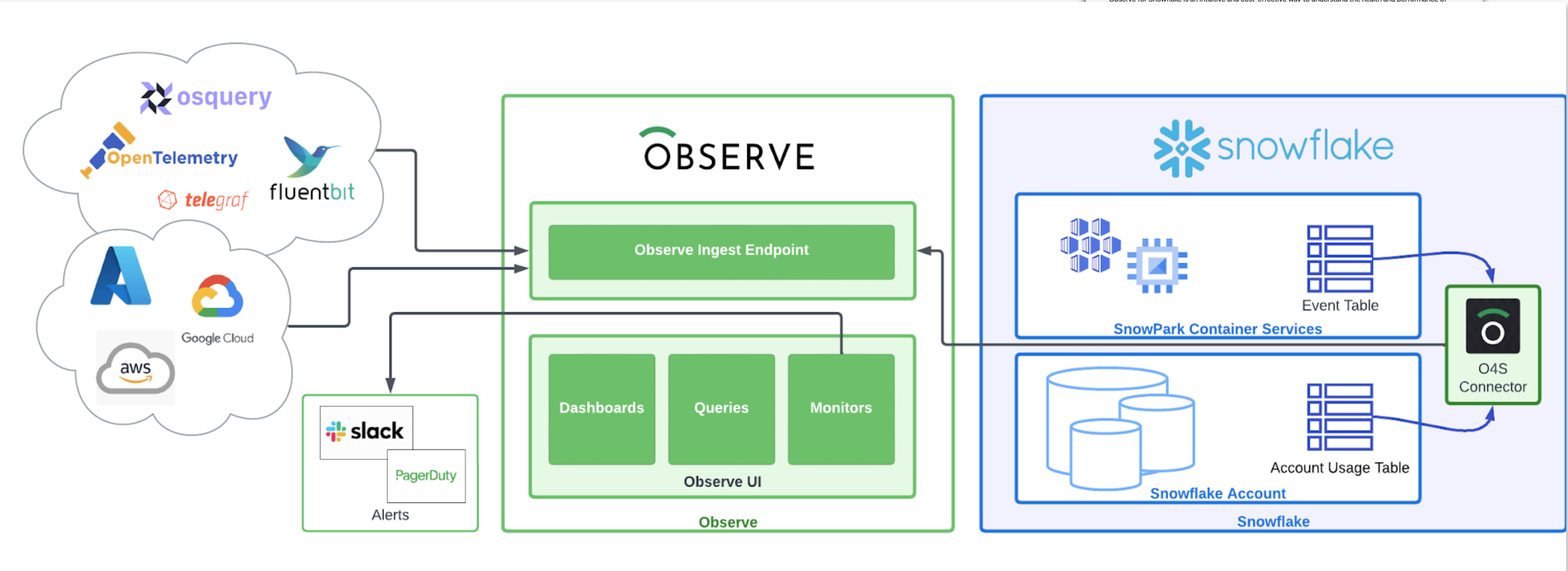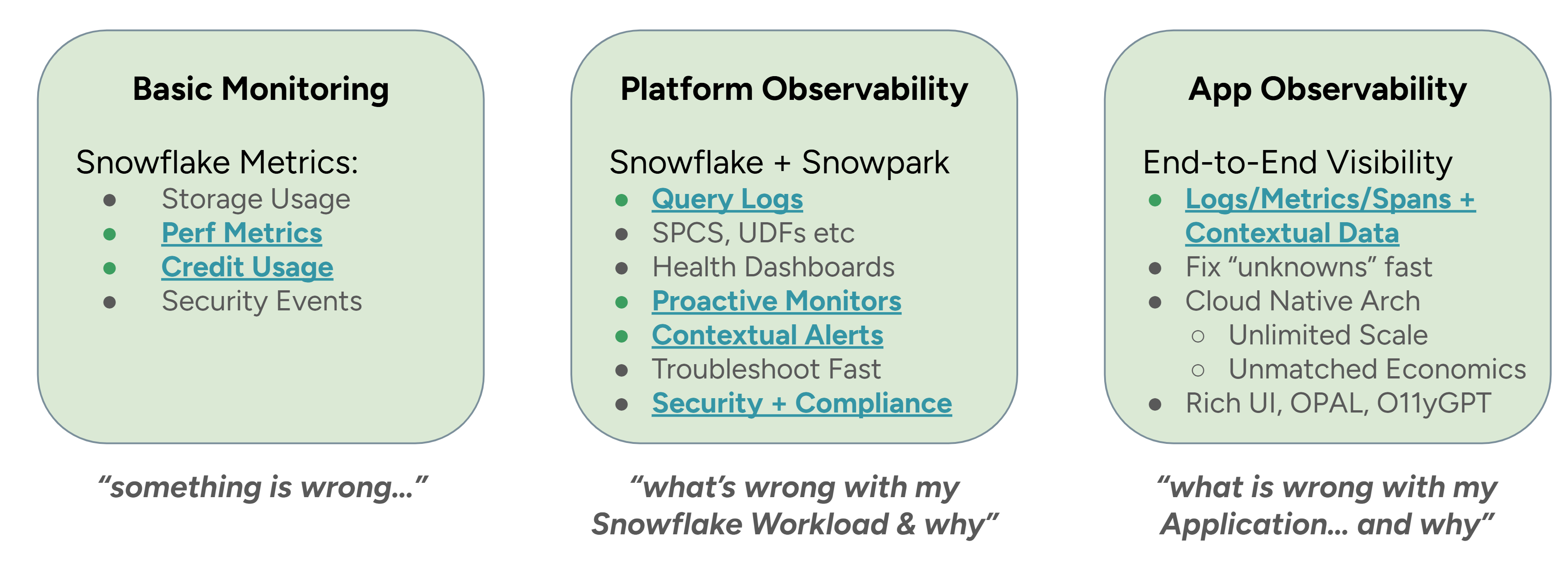Snowflake observability
Snowflake’s Data Cloud is an advanced data platform provided as a self-managed service.
Snowflake Snowsight user interface is where users perform data analysis and engineering tasks, monitor query and data loading and transformation activity, explore Snowflake database objects, and administer Snowflake service, including managing the cost and adding users and roles.
Snowflake provides a read-only ❄️SNOWFLAKE shared database that contains metadata and historical usage data about the objects in your organization and accounts. Some of the views have management screens in Snowsight, but most require careful querying using SQL.
Snowflake captures observability data (logging, tracing, and metrics from various functions and components) in a ❄️Event Table structure based on the OpenTelemetry standard. Snowsight offers basic exploration of logs and viewing of traces for specific query invocations.
Both SNOWFLAKE shared database and Event Tables are scoped to an individual accounts. Many customers who use Snowflake extensively have multiple Snowflake accounts, and desire a holistic view into the entirety of organizational Snowflake footprint.
Observe 4 Snowflake (O4S) helps you natively integrate Snowflake management views and observability data from multiple accounts into a single view. O4S provides access to query and task executions, offers views into Snowpark workloads and ML/AI models, allows for enumeration of all database objects of any kind and of course lets user explore all cost+usage data for various Snowflake features.

O4S brings together data from multiple Snowflake accounts, so SREs and Data Engineering teams can detect anomalies, uncover root causes, and resolve them faster than ever before – no matter where they occur across your Snowflake deployment.

Updated 3 days ago